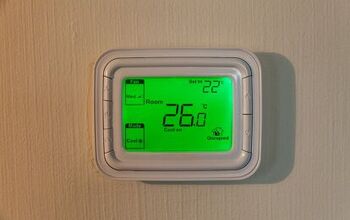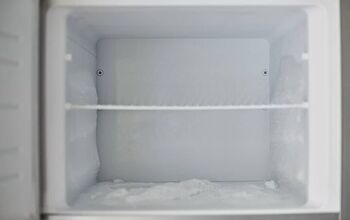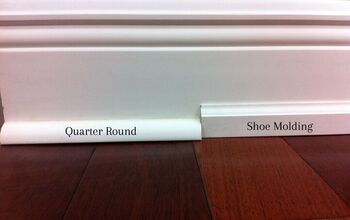How To Extend Downspouts Above The Ground

Gutters and downspouts help keep everything from your roof to the foundation in good shape. If you live in an area where there are heavy storms, you may find that your gutters and downspouts are working overtime when you notice water eroding around your home. If you notice the areas near your downspouts are suffering from erosion or flooding, you might want to look at extending the downspout away from your home.
You can extend your downspouts above ground using aluminum downspout extenders in order to get the water a safe distance from the home. If you are more worried about soil erosion, you can combine a short downspout extender with a decorative splash guard (splash block). There are ways to allow your above-ground extender to pivot in order for you to still tend to your lawn without damaging it.
There are several ways you can extend your downspouts without digging up your soil and building a trench. In fact, most of the above-ground downspout extender options are DIY-friendly and rather affordable. Before you choose which type of downspout extender works best for your home, there are a few things you should know first.
Five Things To Know Before You Extend Your Downspouts
1. Remember ThatDownspouts Come In More Than One Size
As you prepare to extend your downspout, don’t get too overeager by rushing to the home improvement store before you have taken the proper measurements. Downspouts come in many shapes and sizes. Even aluminum downspouts come in two typical sizes. There is the standard 2-inch by 3-inch aluminum downspouts. But there is also the heavy-duty 3-inch by 4-inch downspouts.
2. They Make Downspout Screws For These Types Of Installation
One helpful thing to know is that they make screws specifically for working with downspouts and gutters. These screws are rust-resistant, color-coordinated, and self-piercing. They are also short, which prevents debris from snagging on them and causing downspouts to back up.
3. Measure The Angle You Want To Extend Your Downspouts
You also should understand the angle and length you are looking for in your downspout extension. Measure the slope of your yard as it compares to your home in order to know the angle you want to extend your downspouts. Once you determine the length and the slope, thus the angle of the downspout extender, you will find the type of elbow angle you need.
4. Always Have Higher First Downspout Pipe Inside Lower Downspout Pipe
Make sure you stack your downspout pipes and extenders properly. The higher pipe should go inside the lower pipe. This will prevent water from escaping at the connecting points.
5. Make Sure Your Downspout Extends To An Area That Can Handle More Water
The end goal is to get the water from your downspouts away from your home and foundation. Still, make sure where it ends up won’t create its own flooding or erosion. Ideally, it will dump into a downhill, or gravely area, or towards plants that thrive in very wet conditions.
How Far From The Home Should You Extend A Downspout?
As a rule, if you need water to be displaced away from your home, you should aim to extend the downspout at least 4 feet. This number, however, can vary based on several factors. If the slope of your lawn inclines toward your home, then you might need a much longer extender in order to ensure the water does not drain back toward your home.
Your reason for an extender may also factor into how long your downspout extension needs to be. If you are just worried about occasional erosion from major storms that rarely come through, a splash guard may suffice.
Place A Splash Guard (Splash Blocks) Under Your Downspout
Using a splash guard is by far the easiest way to extend your downspouts above ground and reduce erosion by the side of your home. You can find splash guards, also known as splash blocks, at any home improvement store.
Place these splash blocks underneath the downspout. Next, you will need to purchase an elbow for your downspout. You do not want to put a splash guard under a downspout that faces directly down, as it can involve lots of water pressure and less control over water flow.
Install a 75-degree elbow to the end of your downspout, and ensure the splash guard is placed strategically. This should help reduce the direct erosion you have noticed from your downspout.
Pros And Cons Of Using Splash Guard As Downspout Extender
| Pros | Cons |
| They come in decorative or purely functional modelsWorks great when yard angles downward from homeMakes for a cheap and easy installationIt’s a quick fix when flooding is not the main concern | It does not extend far from homeWon’t prevent basement floodingIneffective when yard angles in the direction of the home |
The best DIY way to extend your downspouts above ground is to use an aluminum downspout extender. In order to do this, you will need an elbow piece similar to the type you would use for a splash guard. The difference is that you will attach a long piece of aluminum downspout to the other end of the elbow. This will guide the water several feet away from the home.
It might be helpful for you to install the extension with the ability to pivot up and down, rather than having one that remains completely stationary. This will allow you to mow and care for the lawn and yard space beneath the extender without bending the metal or damaging the connections.
Pros And Cons Of An Aluminum Downspout Extender
| Pros | Cons |
| Effective at dispersing water away from homeCost-effective and DIYWon’t interfere with your lawn maintenance | Fail over timeNot pleasant to look atMight not extend far enough to completely solve your drainage issue |
Concluding Ideas On Extending Downspouts Above Ground
When you are looking to redirect water from your downspouts an extender is your best bet. If you are less worried about flooding and more concerned about erosion, then you might want to try splash guards under your downspouts. Otherwise, you can opt for aluminum downspout extenders. Connect your downspout and the extender using an angled elbow. Make sure the extender drains into an area that is not also prone to flooding.

Tom Gaffey is an expert writer who currently resides in Washington D.C. Tom has a passion for real estate and home improvement writing, as well as travel and lifestyle writing. He lived the last twelve years in Hawaii where he worked closely with luxury resorts and event planners, mastering his knowledge of aesthetics and luxury products. This is where he found his passion for home improvement and a keen interest in DIY projects. Currently, Tom resides in Washington D.C, and also working on his debut fiction novel.
More by Tom Gaffey
























![Standard Dining Room Table Dimensions [for 4, 6, 8, 10 and 12 People]](https://cdn-fastly.upgradedhome.com/media/2023/07/31/9074335/standard-dining-room-table-dimensions-for-4-6-8-10-and-12-people.jpg?size=350x220)


